Banks and online payment networks—payment settlement entities (PSEs) or third-party settlement organizations (TPSOs)—must report payments in a trade or business to the IRS and payees on Form 1099-K, Payment Card, and Third-Party Network Transactions. These entities include Venmo and CashApp, as well as gig economy facilitators such as Uber and TaskRabbit.
Lower threshold. Congress dropped the minimum threshold for PSEs to file Form 1099-K for a taxpayer from $20,000 of reportable payments made to the taxpayer and 200 transactions to $600 (the same threshold applicable to other Forms 1099) starting in 2022. The lower threshold for filing Form 1099-K means many participants in the gig economy will be getting Forms 1009-K for the first time.
Bills have been introduced in Congress to raise the limits back to $20,000/200 transactions, but there is no guarantee that they will pass. Moreover, taxpayers should generally be reporting income from their side employment, whether it’s reported to the IRS or not.
Freelancers who make money from, for example, an Etsy business or driving for Uber should have been paying taxes all along, but Congress and the IRS have said this responsibility is often ignored. In some cases, taxpayers may not even be aware that income from these sources is taxable.
Some clients may first notice this change when they receive their Forms 1099-K in January 2023. However, well-advised clients should be preparing during 2022 to minimize the tax consequences of the gross amount of Form 1099-K reportable payments.
Taxpayers should be reviewing gig economy activities, which could include driving for Uber or DoorDash, selling crafts on Etsy, or hiring out their services on TaskRabbit. They could also be doing side gigs and getting paid through Venmo or CashApp.
Separate Personal and Income-Generating Payments. Taxpayers should separate taxable gross receipts received through a PSE that are income from personal expenses, such as splitting the check at a restaurant or giving a gift. As PSEs cannot necessarily distinguish between personal expenses and business payments, taxpayers should maintain separate accounts for each kind of payment.
Start Tracking Deductions. Taxpayers who haven’t been reporting income from their side work have likely not been documenting deductions. They need to start doing so now to minimize the taxable income they recognize due to the gross receipts reported on Form 1099-K. The IRS is likely to take the position that all of a taxpayer’s gross receipts reported on Form 1099-K are income and won’t allow deductions unless the taxpayer substantiates them. Deductions will vary based on the nature of the taxpayer’s side work.
Remember the hobby loss rules, which limit deductions in activities not engaged in for profit. Some common expenses in the gig economy include vehicle expenses and cell phone and internet service. In addition, taxpayers who sells products online will have to account for their inventory costs.
Vehicle expenses/mileage. The main expenses for rideshare and delivery drivers is likely to be vehicle expenses. Taxpayers may deduct either the actual cost of using the vehicle in a trade or business or claim a per mile deduction allowance, which is 58.5 cents per mile for 2022.
Where the client is driving their own car for their side gig, it is important to distinguish between business and personal auto expenses. Remember that driving to pick up fares gives rise to deductible expenses; not just the expenses incurred when the driver has a passenger in the car. However, IRS is likely to disallow part of the expenses if it thinks the taxpayer is using the vehicle for personal purposes between passengers.
Passenger automobiles are subject to heightened substantiation rules. Taxpayers can use either the actual cost method or the standard mileage rate to substantiate vehicle deductions. As the actual cost method is more laborious than the standard mileage rate, most taxpayers who drive as a side gig use the standard mileage rate.
Historically, drivers kept a logbook showing the mileage for each business use, the total mileage for the year, the date, destination, and business purpose of each trip, and odometer readings at the start and end of the year. Now there are mobile device apps that can make capturing this information easier.
Cell phone and internet service. Some side gigs require taxpayers use their cell phones or internet. The first step to substantiating these expenses is providing the bill. Next, usage needs to be apportioned or allocated between personal and business use. Courts have allowed deductions based on testimony, but it is better to document business use as much as possible. Cell phones store call logs/browser history/e-mail history, which can be used to substantiate business use.
Selling products online. As long as a taxpayer meets the gross receipts test (i.e., their average annual gross receipts over a three-year period do not exceed $27 million), they are not required to use inventories to account for their costs of producing goods. Instead, the taxpayer can either treat inventory as non-incidental materials and supplies or conform its treatment to the method reflected in their books and records.
What to do now. Taxpayers should begin collecting necessary information now so they can increase their tax withholding or, if necessary, make estimated tax payments to avoid penalties.
Make sure payments are being recorded accurately. Payments received in a trade or business should be separated from personal payments for things such as check-splitting at restaurants or gifts. If payments have been reported incorrectly, try to get a corrected Form 1099-K.
Taxpayer and preparer obligations. Preparers can start explaining Form 1099-K to their clients now and should be prepared to answer their questions come January. Discuss taxpayer penalties for failing to report income and emphasize that you will not omit income from a return. Remember, there are also preparer penalties for failing to report income correctly.
Source: Checkpoint Newsstand 5/10/22



